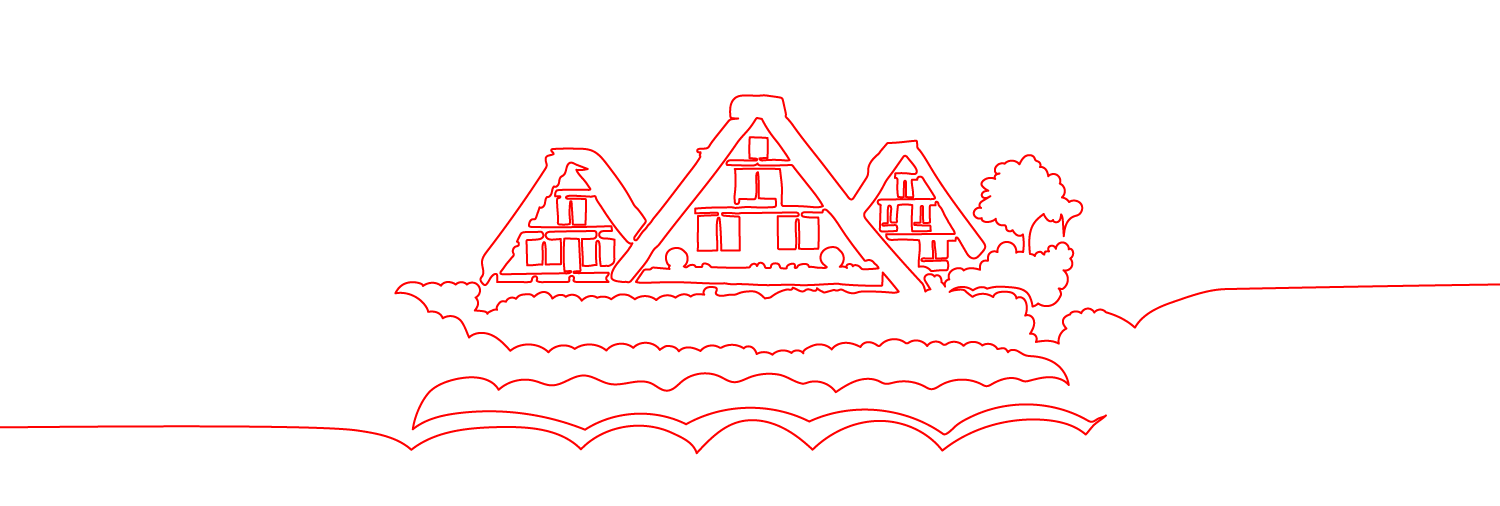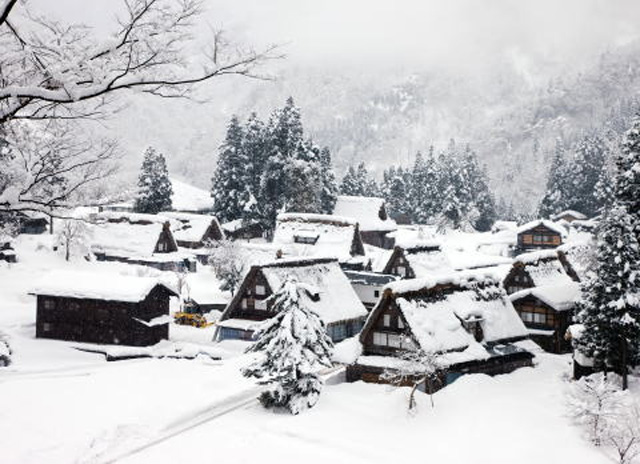HOME → 世界文化遺産でたどる日本史 → 白川郷・五箇山の合掌造り集落

Historic Villages of Shirakawa-go and Gokayama

-
白川郷・五箇山の合掌造り集落(富山県南砺市・岐阜県白川村世界遺産登録1995年)
17世紀頃、雪深い白川郷・五箇山の集落で始まったと考えられるのが「合掌造り」です。 その急勾配の屋根や家屋の積極的な産業的活用は、日本の田園地帯でも独特で、住民あげての維持・保存の必要性からも世界文化遺産に登録されました。
-
【文化遺産オンライン(文化庁)】
http://bunka.nii.ac.jp/jp/world/h_04.html - 【白川郷観光協会】
http://www.shirakawa-go.gr.jp/ - 【南砺市】
http://www.city.nanto.toyama.jp/cms-sypher/www/kanko/index_legacy.html - 【南砺市観光協会】
http://tabi-nanto.jp/
-
【文化遺産オンライン(文化庁)】
-
Historic Villages of Shirakawa-go
and GokayamaGassho-zukuri houses are thought to have first appeared in the villages of Shirakawa-go and Gokayama around the 17th century because of the heavy snowfalls. The steep angles of the roofs and the area's vigorous home-based industry was unique, even in the Japanese countryside, and the villages were designated a World Heritage Site both for this reason, and out of the need to maintain and preserve the inhabitants' traditions.
- 【Shirakawa-go Tourist Association】
https://shirakawa-go.gr.jp/en/ -
【UNESCO World Heritage Center】
https://whc.unesco.org/en/list/734 -
【Nanto city tourism bureau】
http://www.tabi-nanto.jp/en/
- 【Shirakawa-go Tourist Association】
-
白川乡与五个山的合掌造村落
合掌结构"被认为始于17世纪前后积雪厚重的白川乡、五个山村落。陡峭的屋顶及对房屋进行积极的产业化处理即使在日本田园地带也极具特色,也因需要全体居民共同维修、维护而被列入世界文化遗产名录。
-
白川鄉與五箇山的合掌造聚落
一般認為「合掌造建築」是於十七世紀左右起源於冬季積雪深厚的白川鄉與五箇山聚落。其陡峭的屋頂以及積極將房舍活用於商業等特點,在日本田園地區獨樹一格,同時考量到合掌造建築必須由全體居民加以維持與保存,因而登錄為世界文化遺產。
- 【白川鄉觀光協會】
https://shirakawa-go.gr.jp/zh/
- 【白川鄉觀光協會】
-
시라카와고와 고카야마의 역사 마을
17세기경 폭설지역인 시라카와고와 고카야마의 취락에서 시작되었다고 여겨지는 건축양식이「갓쇼즈쿠리」입니다. 급하게 경사진 지붕과 가옥을 적극적으로 산업에 활용한 예는 일본의 전원지대에서도 독특하고, 모든 주민이 나서서 유지하고 보존해야 하는 필요성에서도 세계문화유산으로 지정되었습니다.
-
Villages historiques de Shirakawa-go
et GokayamaOn considère que c'est dans les hameaux de Shirakawa-go et Gokayama aux fortes neiges que sont nés les « gassho-zukuri » (littéralement « structure aux mains jointes ») vers le 17ème siècle. Les toits à la forte inclinaison et l'utilisation active des maisons pour l'industrie n'ont pas d'autres exemples dans les régions rurales du Japon et l'importance de leur maintien et préservation par les habitants a été à l'origine de leur inscription au Patrimoine culturel mondial.
-
【UNESCO World Heritage Center】
https://whc.unesco.org/fr/list/734
Retour sur l'histoire du Japon à travers son Patrimoine culturel mondial
-
【UNESCO World Heritage Center】
-
Historische Dörfer Shirakawa-go
und GokayamaEs waren wohl die schneereichen Dörfer Shirakawa-go und Gokayama, wo im 17. Jahrhundert damit begonnen wurde, Häuser mit steiler Dachkonstruktion, dem “Gassho-zukuri", zu bauen. Das steile Gefälle dieser Dächer und die aktive Nutzung der Häuser für industrielle Aktivitäten war auch in den ländlichen Gegenden Japans etwas Besonderes und auch weil die Dorfbewohner für die Instandhaltung und Bewahrung der Häuser zusammenarbeiten mussten, wurden die Dörfer als Weltkulturgüter registriert.
Ein Gang durch die japanische Geschichte anhand des Weltkulturerbes
-
I Villaggi storici di Shirakawa-go
e GokayamaSi pensa che lo stile architettonico detto gasshō-zukuri (struttura a forma di "mani congiunte in preghiera") abbia avuto inizio nei nevosi villaggi di Shirakawa-go e Gokayama. Il loro tetto spiovente e l'utilizzo attivo delle abitazioni nelle attività artigianali è del tutto peculiare a confronto con le altre regioni giapponesi, e sono state annoverate tra i patrimoni dell' umanità anche in considerazione degli sforzi cui tutti i loro residenti sono chiamati per garantirne la preservazione.
-
Aldeas históricas de Shirakawa-go
y GokayamaLa “construcción de Gassho-zukuri" (tejado de madera cubierto de pajas) se cree que empezó hacia el siglo XVII en los pueblos de Shirakawa-go y Gokayama, de nieve abundante. Su tejado muy inclinado y el eficiente aprovechamiento de los edificios para su uso como industria las convierten en especialmente singulares incluso comparando con otras zonas rurales de Japón. Asimismo, también por la necesidad de la colaboración de los ciudadanos en el mantenimiento/conservación fueron declaradas Patrimonio Cultural de la Humanidad.
La Historia de Japón a través del Patrimonio Cultural de la Humanidad
-
Vilas Históricas de Shirakawa-go
e GokayamaLocalizadas numa zona de muita neve, pensa-se que as vilas de Shirakawa-go e Gokayama foram fundadas por volta do século XVII, construídas de forma “Gassho-zukuri"(telhado de madeira coberto de palha). Quanto a essas casas de telhado inclinado de intensa atividade industrial particular das zonas rurais japonesas, sua manutenção e preservação necessárias dadas pelos habitantes foram também classificadas como património mundial e cultural.
Seguindo a história do Japão através do seu património mundial e cultural
-
Исторические деревни Сиракава-го и Гокаяма
В 17 веке в Японии начали строить дома с крышей в форме буквы "А" - так называемый стиль "гассё". Считается, что первые такие постройки появились в деревнях Сиракава и Гокаяма, известных своими обильными снегопадами. Такая сильно покатая крыша, наравне с активной индустриализацией домов, является особенностью японской сельской местности. Этот феномен был занесен в список ЮНЕСКО также и для того, чтобы поддержать и сохранить население этих уникальных исторических деревень.

